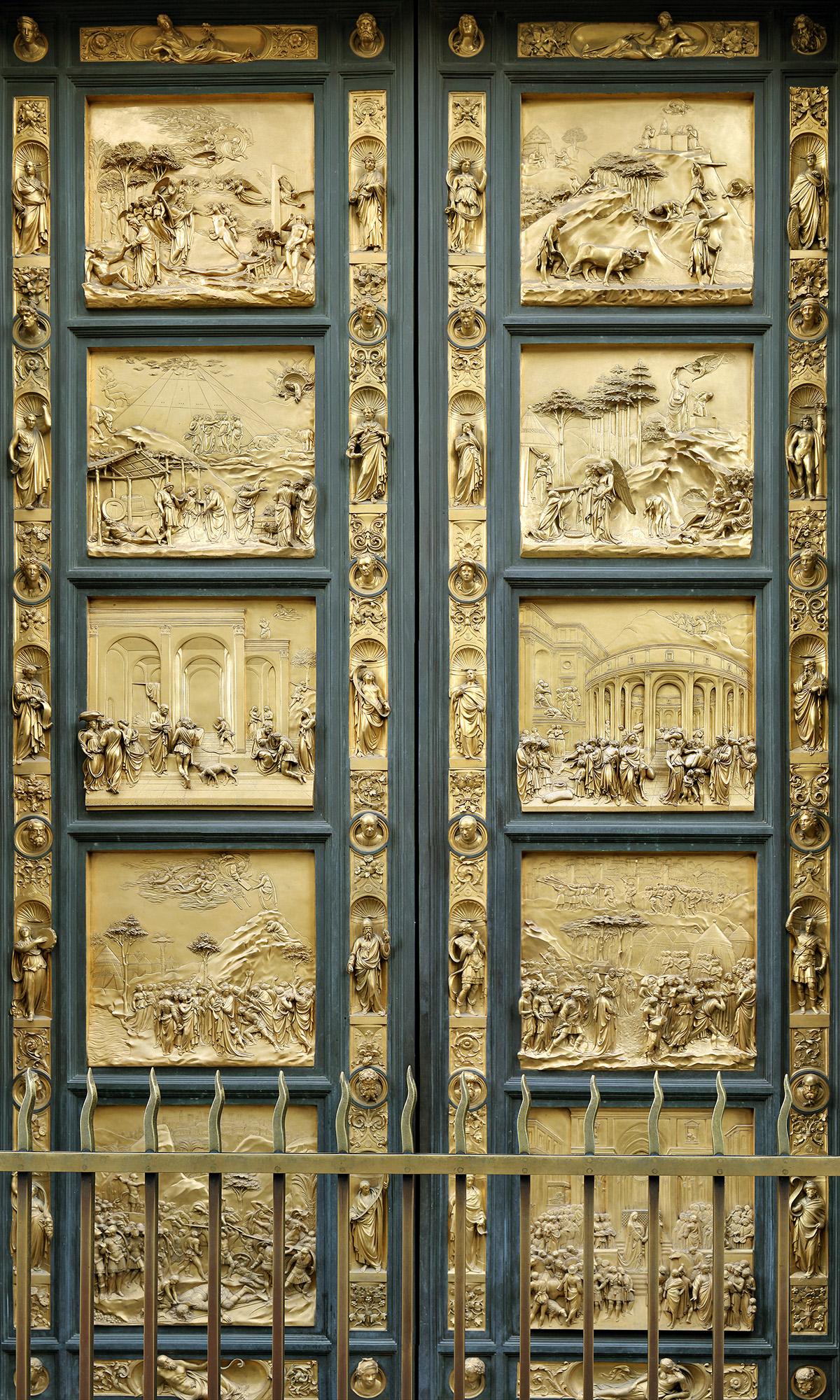"The Gates of Hell" or "La Porte d'Enfer" is a sculpture created by French artist Auguste Rodin. It was commissioned in 1880 by the Directorate of Fine Arts for a Decorative Arts Museum; however, the sculpture was not finished by its due date in 1885 and the museum project eventually failed. Rodin kept the piece and continued to make additions and edits to it until his death in 1917.
I found this piece to be fascinating because everyone knows Rodin (whether they know it or not), but this piece is actually the grandfather of many of his most famous sculptures. He was inspired by many of the paintings I have discussed previously as well as medieval cathedrals, a few books, and the imagery in Dante's Inferno. A few of his more famous pieces include "The Thinker" (on top of the doors and center), "The Kiss" (removed by Rodin during editing so he could make it a full sculpture), and "Paolo and Francesca"(left door pane) who were lovers subjected to torment in the second level of Dante's hell.
I love this sculpture because there is so much drama to it that a painting cannot convey. The way the figures seemed trapped in the doors and under such duress really makes the story seem much more real. The emotions that surround hell are more easily understood when there are very human-like, three dimensional faces in my opinion and that is accomplished for me in this sculpture.






